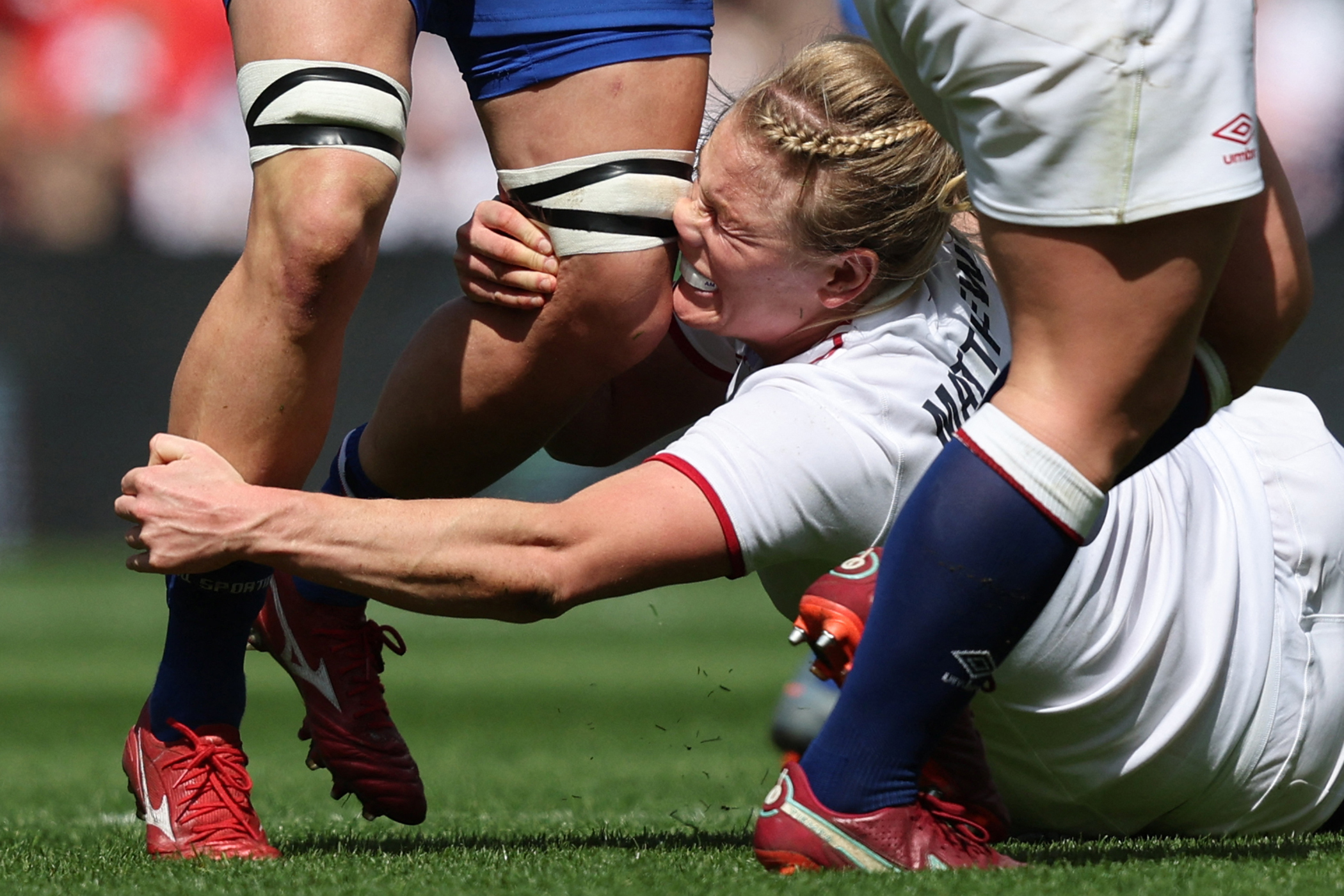While it’s incredible to see how fast women’s rugby is growing – with packed stadiums, professional contracts and global attention – it’s hard to celebrate without thinking about those who came before.
More than 700 rugby players are suing World Rugby, England Rugby and the Welsh Rugby Union for what they allege to be a failure to adequately educate players and protect them from brain injuries. The vast majority of the claimants are men, although a small number of women are included in the lawsuit. Some of those claimants have received brain scans that reveal early onset dementia and probable chronic traumatic encephalopathy (CTE), a form of brain disease that can only be diagnosed postmortem.
Many former players live with neurodegenerative disease (a separate issue entirely from the number also living with or dying from motor neurone disease) as a result of the number of head impacts they sustained in their careers. Those players include Alix Popham, the former Wales flanker, who was diagnosed with early onset dementia aged 40. Popham can’t remember his career, but his neurologist estimates he sustained 100,000 hits to his head over the 14 years he played professional rugby.
The lawsuit focuses on an era, roughly from the 1980s to early 2010s, when the men’s game was transitioning from amateur to professional. The women’s game is currently at a comparable point, with mixed levels of professionalism. Last month’s World Cup final, for example, was played between England’s Red Roses, full-time professionals, and Canada, who crowdfunded their way to the tournament.
The concern is that if the women’s game doesn’t learn from the men’s mistakes– if the applause for progress drowns out the calls for serious reform – it could face the same crisis in years to come. As a former rugby player, the unease is personal.
At about 2am one November morning in 2017, I woke up on the floor outside my bedroom. Every muscle hurt, I could taste blood in my mouth, and I didn’t know how I got there. The first thought I had was thatI must have been attacked. Actually, I’d had a post-traumatic seizure – the result of a brain injury sustained playing rugby the previous day. It was my second brain injury in a short period. The first time, I had been knocked out during a tackle. This time, I had received a blow to my head. Lying on the hallway floor, I was terrified and unable to move.
I woke up on the floor outside my bedroom. Every muscle hurt, I could taste blood in my mouth, and I didn’t know how I got there
My memory of the event is blurry, but I recall seeing the blue lights of the ambulance outside my house and dragging myself across the floor to open the front door. I remember wailing, not crying, from a mix of fear, pain and relief when I got the door open, but I don’t remember much of the few days that followed. Luckily, I have no brain damage or long-term effects from that night. I recovered fully, I haven’t had a brain injury since, and I continued to play afterwards. But it was a sobering taste of the reality of contact sport.
Rugby has evolved over the years, with stricter head injury assessment protocols and investment in technologies designed to detect and manage concussions better. Laws around high tackles have been tightened, independent match-day doctors are now present at elite tournaments, and concussion education is mandatory across national unions. These measures aim to build a culture where player welfare is prioritised over performance – the very culture that many argue was missing not the during men’s rugby’s professional transition.
Yet there is a stark imbalance. An estimated 80% of all sports science research has historically been conducted on male athletes, with only around 20% focusing on women, and the evidence base for brain injuries in women’s rugby is much smaller than in men’s. Women’s research is playing catch-up – but it so far suggests women sustain, report and suffer from brain injuries differently to men. And that knowledge gap risks a repeat of the painful chapter unfolding in men’s rugby.
To counter this, since 2021 World Rugby has required all research it funds must include at least 50% women. Dr Elisabeth Williams, a leading researcher of brain injuries in women’s rugby, is working on one of those studies. Her research includes considering whether low tackles, below the knee, are as dangerous as high tackles, due to the height a player falls from when tackled low. “If you had the neurologists making the [rugby] rules, they would look a lot different to how they are now,” she says. “The people that make the rules are not seeing the pathology of the brains of the people coming in with CTE aged 40. They aren’t the ones doing the ongoing assessments of Alix Popham.”
Williams balances her concerns with a love for the game. “Where women’s rugby is heading is awesome,” she says. “I remember going to watch a New Zealand v England game in 2010 and there were only a few hundred people there. If I was a little girl now, I would be so excited about life. But when I look on the brain injury side, it’s less optimistic. Do I have concerns? Of course I do. You can’t not. I If my daughter wants to play rugby I won’t stop her, but she will have intense training about how to fall, how to control her head.”
Promising work is under way. World Rugby has invested more than €2m into mouthguards equipped with sensors that measure head acceleration in real time and flash to alert the referee that a player has received a knock that requires medical attention. The idea is that if a player experiences a high-force event, even if they don’t display obvious symptoms, the mouthguard will send an alert to the independent match-day doctor and prompt a head injury assessment (HIA). The mouthguards help track the frequency and magnitude of “head-acceleration events” over training, matches and seasons. Williams published the first study that tracked a men’s and women’s team from the same club using trackable mouthguards and found no difference in the magnitude of head impacts between the sexes.
Still, these measures are reactive. They do not resolve the knowledge deficit about how repeated impacts may affect a woman’s brain over decades. Nor do they fully counter the challenges that women’s rugby faces, including smaller budgets and less consistent medical staffing.
The men’s game has shown the consequences of contact sports can take decades to manifest – and not enough is known about what’s going to happen in the women’s game. I don’t know enough about what my brain injuries could lead to in the future. Nobody playing rugby can afford to hide from that uncertainty.
Photograph by Adrian Dennis, AFP/Getty

